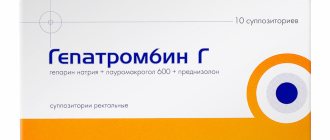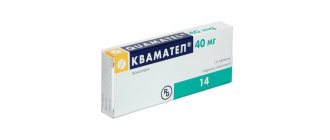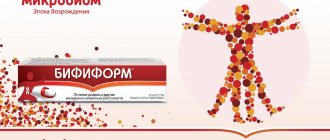How does Forlax work?
Forlax 4g contains macrogol 4000, an osmotic laxative also known as polyethylene glycol (PEG).
Macrogol 4000 retains water in stool. It softens hard stools and increases their volume. This speeds up the transit of intestinal contents, facilitates bowel movements and gives a natural feeling of relief. Macrogol 4000 is not absorbed by the body and is excreted unchanged.
What else is important to know: laxatives
FORLAX – a new approach to the treatment of constipation
Causes of constipation
Constipation is a polyetiological syndrome that is characterized by a long delay in defecation. Constipation can be neurogenic (for example, with organic diseases of the central nervous system); reflex (with lesions of the rectum, as well as some other organs and systems); a consequence of chronic poisoning (lead, morphine, nicotine, etc.), decreased function of the pituitary gland, thyroid gland, ovaries; nutritional (with insufficient intake of fiber from food); hypokinetic (with insufficient physical activity); mechanical (for example, due to narrowing of the intestine or congenital pathological elongation of the colon).
In recent years, the point of view has been considered that constipation can occur when the intestinal biocenosis is disrupted, the causes of which are different - monotonous diet, allergic diseases, weakening of the immune system.
Chronic constipation is accompanied by symptoms of intoxication, which are manifested by a deterioration in the patient’s general well-being, decreased performance, weakness, irritability, etc. Dyspeptic symptoms often develop - nausea, loss of appetite, perverted taste, etc.
Due to chronic constipation, hemorrhoids, fissures of the rectum and anus, and paraproctitis can develop. Patients with chronic constipation are at increased risk of developing colon cancer.
Diet therapy
In most cases, a balanced diet helps improve the condition of patients with chronic constipation.
You should eat more raw vegetables, fresh and dried fruits, dairy products, vegetable oil, wholemeal bread with bran, etc. Bran is a food substrate for bacteria inhabiting the intestines, helps maintain the required pH in the lumen of the colon, and contains B vitamins.
For constipation, it is necessary to exclude from the diet foods that increase the process of gas formation in the intestines (fresh dairy products, legumes, radishes, grapes, etc.). In addition, you should limit the consumption of coffee, cocoa, red wine, rice, white bread, chocolate, blueberries, lingonberries, dogwood, pomegranates, pears, chopped and pureed foods, pasta, etc., that is, foods that slow down intestinal motility .
Laxatives
Drug treatment of constipation should be aimed at normalizing stool, transit of intestinal contents, eliminating spasms and pain during bowel movements, and preventing the loss of electrolytes and water.
Depending on the mechanism of action, laxatives are divided into 4 groups. Group 1 includes laxatives that cause chemical irritation of the receptors of the intestinal mucosa: castor oil, preparations of rhubarb root, buckthorn bark, senna leaves, some synthetic compounds (for example, phenolphthalein). It is not recommended to take these drugs for a long time, as this leads to the development of colon atony.
The 2nd group includes osmotic laxatives (magnesium sulfate, sodium sulfate, Carlsbad salt, etc.). Magnesium sulfate can be used occasionally as a laxative, since long-term use of this drug can cause diarrhea. It can be used on its own for no more than 2 weeks.
Group 3 includes drugs that increase the volume of intestinal contents: methylcellulose, preparations containing hydrophilic plant fibers. The use of drugs in this group should be
limited, since when plant fibers are fermented by intestinal microflora, a large amount of gases and acids are released, which worsens the condition of patients.
The 4th group includes stool softeners, for example petroleum jelly, the pharmacological action of which is based on the fact that when taken orally it is not absorbed and softens stool. It should be noted that petroleum jelly should not be taken for more than 7–10 days, since when used systematically it leads to impaired absorption of fat-soluble substances, including vitamins, in the intestine.
"Weaknesses" of laxatives
Almost 80% of people with chronic constipation use laxatives. Regardless of the properties of a particular drug, its use for a long time leads to the development of a number of undesirable effects and the formation of drug dependence. The effectiveness of laxatives decreases over time. After 3 years of constant use of laxative drugs, they are effective in 73% of patients, after 5 years - in 50%, and after 10 years - only 11% of patients.
In addition, constant use of laxatives can lead to damage to the intermuscular nerve plexuses and melanosis of the intestinal mucosa, increased intestinal dyskinesia, and uncontrolled use can lead to loss of electrolytes and dehydration of the body, the development of dysbiosis and vitamin deficiency. When taking laxatives in high doses, impaired renal and liver function may develop.
FORLAX is an effective remedy for the treatment of constipation
The above side effects are absent from the drug FORLAX produced by the French pharmaceutical company. The active substance of FORLAX - macrogol 4000 - is an osmotic laxative. The molecule of the active substance of the drug is a high molecular weight ethylene oxide, which forms hydrogen bonds with water molecules in the intestinal lumen. Thus, FORLAX, by increasing the liquid content in chyme and softening its consistency, facilitates the act of defecation. Forlax is not metabolized, not absorbed, does not change the pH of the chyme and acts regardless of the composition of the intestinal bacterial flora. When using Forlax, there is no burning sensation in the anus, and gases are not formed as a result of the fermentation process in the intestines.
FORLAX, while increasing the fluid content in the chyme and its mass, does not change the biological parameters of the intestinal contents, prevents the loss of electrolytes in feces and does not disrupt lipid metabolism. The orange and grapefruit flavored aromatic additives included in FORLAX do not contain electrolytes that impart an unpleasant salty taste.
The effect of the drug appears 24–48 hours after its administration, and the transit of intestinal contents is normalized within 2–3 weeks of treatment.
FORLAX is available in sachets, each of which contains 10 g of macrogol 4000 in powder form. Before use, the contents of 1 sachet are dissolved in 200 ml of water; Take the contents of 1-2 sachets simultaneously with the main meal. To achieve the effect, it is important to observe the duration of the course of treatment - at least 10-12 days.
FORLAX in the treatment of chronic constipation
In 1998, under the leadership of Professor O.N. Minushkin at the Department of Gastroenterology of the Medical Center of the Administration of the President of the Russian Federation, 30 patients with various pathologies of the digestive organs were examined. All patients complained of chronic constipation (average disease duration - 20.6 years). FORLAX was prescribed at a dose of 20 g once a day for 10 days.
During treatment with FORLAX, 83% of patients had normal bowel movements within 4 days. The patients tolerated the treatment well. In 40% of patients, after stopping treatment, stool became regular, which may be due to the restoration of the sensitivity of the receptors of the intestinal mucosa. Taking FORLAX was not accompanied by abdominal pain or tenesmus.
In 1999, at the Department of Gastroenterology and Dietetics of the Kyiv Medical Academy of Postgraduate Education (KMAPO) named after. P.L. Shupik under the guidance of Professor N.V. Kharchenko conducted a study in which 20 patients with constipation of various etiologies were prescribed FORLAX at a dose of 20 g per day (1-2 doses) for 10-15 days. During treatment, 75% of patients achieved regular bowel movements on days 2–4 of therapy. After completion of treatment, abdominal pain decreased or disappeared in 75% of patients, flatulence decreased or disappeared in 65%, intestinal palpation was painless in 70%, 90% of patients noted an improvement in quality of life and expressed a desire to undergo a second course of treatment.
FORLAX in pediatric practice
In 1999 at KMAPO under the guidance of Professor S.S. Kazak conducted a study on the effectiveness of the drug FORLAX in children with pathology of the digestive system, accompanied by constipation. The study involved 25 children aged 8–14 years, who were prescribed FORLAX at a dose of 10–20 g (depending on age) for 5–10 days.
According to the study results, in 64% of cases, regular daily bowel movements were established on the 2nd day of treatment, in 28% the effect was achieved on the 3rd day, and in 8% on the 4th day after starting the drug. It was also found that 76% of patients had regular bowel movements within 35 days after stopping FORLAX therapy
Use of FORLAX in pregnant women
The number of medications that can be used to treat constipation during pregnancy is limited due to the risk of miscarriage.
In a study conducted in 1999 at the Department of Obstetrics and Gynecology of the National Medical University. A.A. Bogomolets, FORLAX was prescribed to women with threatened miscarriage, anemia and gestosis, who complained of constipation. The results of the study confirmed the effectiveness of FORLAX. Thus, after 24–36 hours, stool returned to normal in 71% of pregnant women, after 48 hours - in 29%, and for 42.1% of women, taking the contents of 1 sachet of FORLAX once a week was enough to maintain normal stool.
FORLAX was also noted to be highly effective in the postpartum period, especially in women after episiotomy. By the time the sutures were removed, all patients had regular bowel movements. Therefore, cleansing enemas were not used before removing the sutures. In all cases, the wounds healed by primary intention (Benyuk V.A. et al., 1999).
FORTRANS - the same FORLAX
To prepare the patient for surgery, endoscopic or x-ray examination of the colon, experts suggested oral lavage using the drug FORTRANS, which includes high molecular weight ethylene oxide (macrogol 4000), but in a higher dose compared to FORLAX - 64 g, as well as a complex electrolytes and flavoring.
Typically, the contents of 3–4 sachets of the drug are used for lavage. The contents of 1 sachet are dissolved in 1 liter of water. The patient drinks the first 2 liters in the afternoon one day before the study, the second part in the morning on the day of the study.
The use of the solution in 89% of cases allows achieving good results. Taking FORTRANS does not change the physiological constants of the body, does not affect hemodynamic parameters, or the general well-being of patients (Nikiforov P.A. et al., 1999).
FORTRANS is also used to cleanse the intestines at home. To do this, you need to take the contents of 1-2 sachets.
The publication was prepared based on materials provided by the representative office in Ukraine, tel./fax, 293-41-55, and
Recommended dose of Forlax 4 g
For children:
- from 6 months to 1 year – 1 sachet per day,
- from 1 year to 4 years 1-2 sachets per day,
- from 4 to 8 years 2-4 sachets per day.
The effect of Forlax appears 24-48 hours after administration.
The duration of treatment should not exceed 3 months . Maintaining the effect after restoring normal bowel function should be achieved through an active lifestyle and a diet rich in plant fiber.
Contraindications and precautions in the use of Forlax
Forlax. Packaging of the drug
Before using Forlax, you should consult your doctor, because this drug has several contraindications. It cannot be used in the following cases:
- Particular sensitivity or allergy to macrogol or other components of the drug
- Risk of bowel perforation or perforation
- Complete intestinal obstruction or suspicion of it
- Intestinal inflammation
- Abdominal pain, the origin of which is unknown
- Perforations of the gastrointestinal tract
In addition, when using Forlax it is necessary to take some precautions that will protect against unwanted consequences. Do not use it too long or too often. And this solution can only be taken as a supplement to a diet and a healthy lifestyle, which includes increased fluid and fiber intake and physical activity.
Side effects from using Forlax include diarrhea and vomiting, so this drug should be taken with extreme caution in patients taking diuretics or who have impaired renal or liver function.
Such patients need to learn to control the content of electrolytes in the body. If, after taking the drug, severe abdominal pain occurs, the temperature rises, or gastric bleeding begins, you must urgently call an ambulance. You can take Forlax solution only after consulting your doctor.
Contraindications
The medicine should not be taken if:
- hypersensitivity to macrogol or other substances included in the composition;
- inflammatory diseases of the gastrointestinal tract in the acute phase;
- painful sensations in the abdomen of unknown origin;
- intestinal obstruction;
- congenital enlargement of the large intestine combined with narrowing;
- ulcers and Crohn's disease;
- holes in the walls of the intestines/stomach or at risk of their formation;
- the likelihood of surgical intestinal pathology;
- suspected gynecological surgical pathology.
Price, where to buy, reviews
Forlax can be bought at a pharmacy or ordered online. The price starts from 250 rubles. for 20 sachets with a dosage of 4 g and from 225 rubles. for 20 sachets with a dosage of 10 g. The original drug is produced only in France. Analogues - Russian Lavacol on macrogol. Normaze and Duphalac, produced in the form of sweet syrups, have a similar effect.
Doctors speak extremely positively about the drug. High effectiveness, ease of use, mild effects, and rare occurrence of side effects are noted. It is the main modern treatment for constipation in young children.
Patients like the taste of the medicine, the quick effect without bloating or abdominal discomfort. Forlax comes to the rescue in the treatment of chronic constipation and solving bowel problems in women after childbirth. After the course of treatment, complete normalization of intestinal function is noted.








